Segundo Barrio's history comes alive in its colorful murals
Segundo Barrio is a historic district with iconic neighborhood shops like Bowie Bakery, a prominent Sacred Heart church and longtime residents who often walk to their favorite places.
Along its walls, the Second Ward also provides a colorful trail of murals that provide a glimpse into the area's history — from its proximity and relationship to Juárez and cultural pride such as pachucos and El Chuco to its ties to indigenous groups and its strong Catholic faith.
Here is a photographic tour of some of the area's most iconic murals, with information provided by the Tom Lea Institute. The Institute often includes a mural tour as part of its celebratory events each year in honor of the late artist.
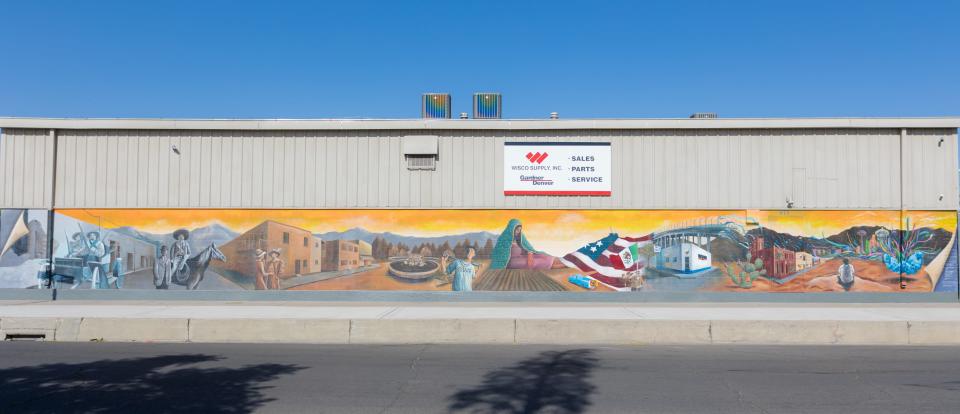
This mural, at the intersection of St. Vrain and 7th Avenue, depicts the Franklin Mountains, Pancho Villa and the Revolutionaries, Bowie Bakery, the alligators (representative of the ones that used to be at the Placita) and the Virgen de Guadalupe.
Pancho Villa was prominent in the area, with his stash house located in Downtown El Paso on Leon Street. Historians said he kept some of his treasures at the home, which has a marker on the outside.
The Virgen de Guadalupe will appear in several murals throughout the community, emphasizing the faith in the apparition of the Mestizo virgin.
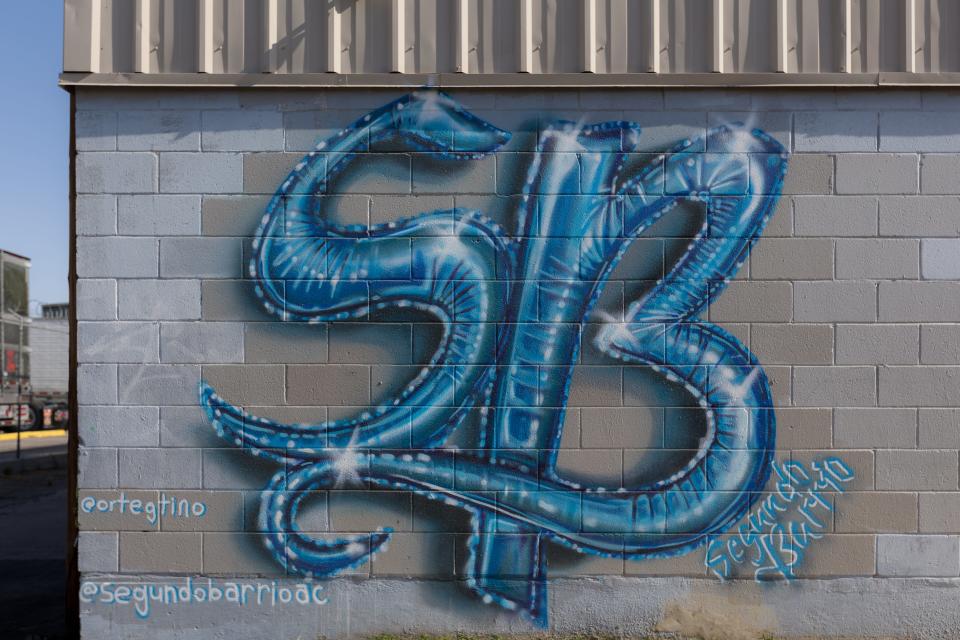
A simple mural of Segundo Barrio's initials made with spray-painted Mylar balloons, at 910 E. 7th Avenue, shows the art of El Paso artist Tino Ortega. The mural was painted in 2021 and is one of several found around El Paso by the artist, who owns Galeria Lincoln.
Ortega says he didn't grow up in Segundo but had many family members who did.
"My aunt would tell me stories about their times and experiences there. The neighborhood definitely has this energy that words would fall short of," he said on his Instagram photo of the mural.
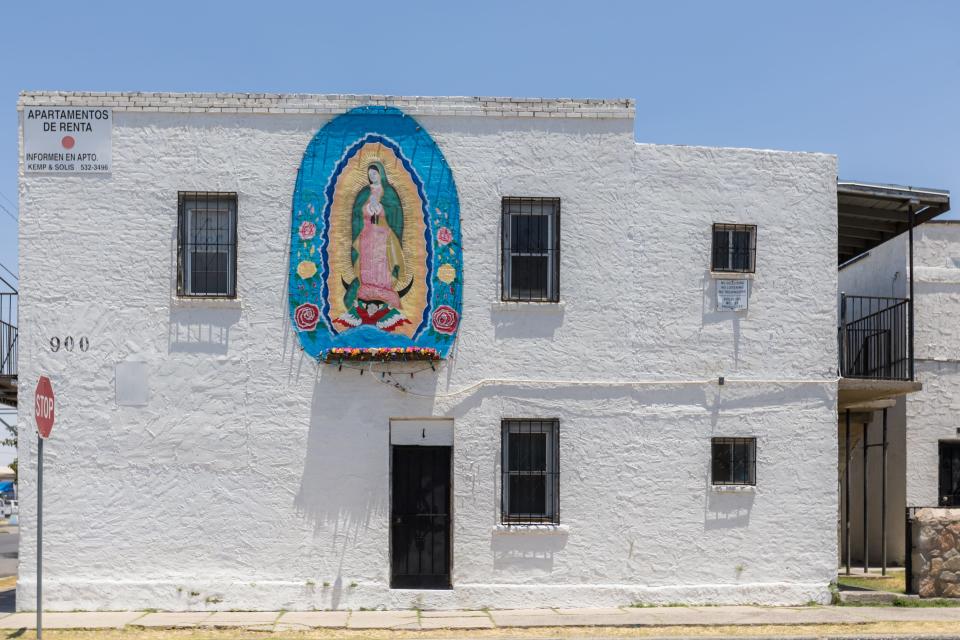
La Virgen de Guadalupe, painted high on a building at 900 S. Ochoa, includes special details that show her fondness to Catholic faithful. She is trimmed in lights, which can be turned on at night.
Painted roses surround her image to represent the roses Juan Diego found at the top of Tepeyac as a symbol that the Blessed Mary was appearing. He took the roses in his Tilma to the bishop who had asked for a sign.
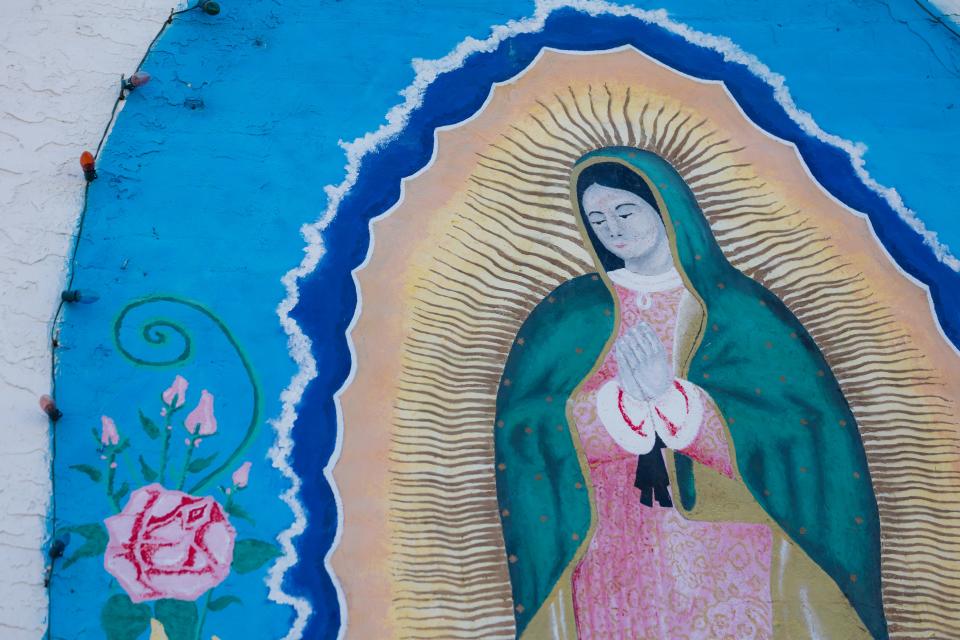
The mural also has a shelf lined with plastic roses.
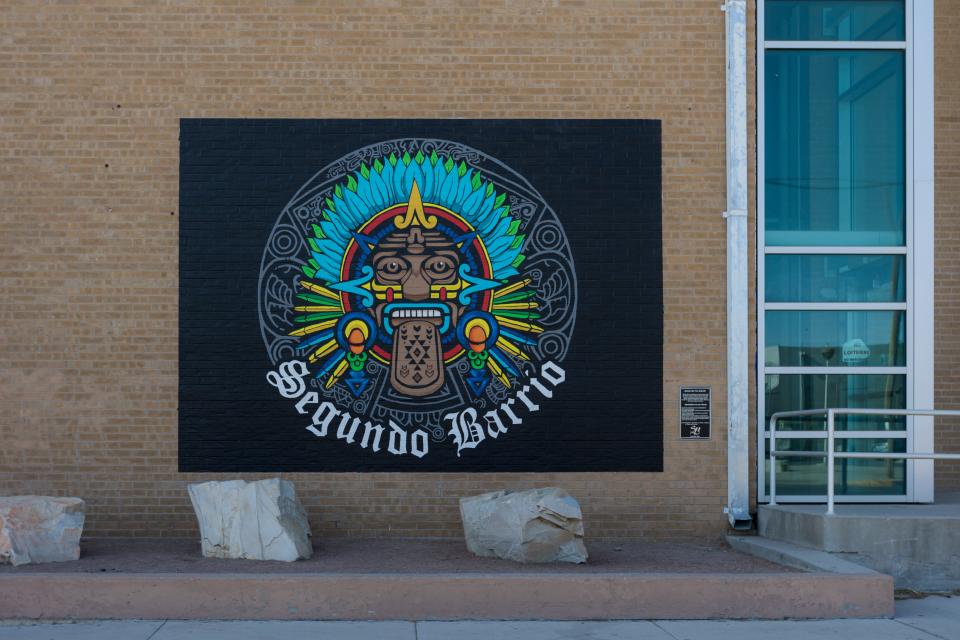
"Quinto Sol-The Rebirth" is located on the wall of the Armijo Community Center Building at Seventh Avenue and Florence Street.
It was painted by Francisco Delgado, Francisco Camacho and Bobby Lerma in December, 2020.
Art historian Adair Margo, said in a recent mural tour, that the mural is Chicano in nature and is based on the Aztec calendar in the center. The letters are old English, a font which were often used by Chicano activists.
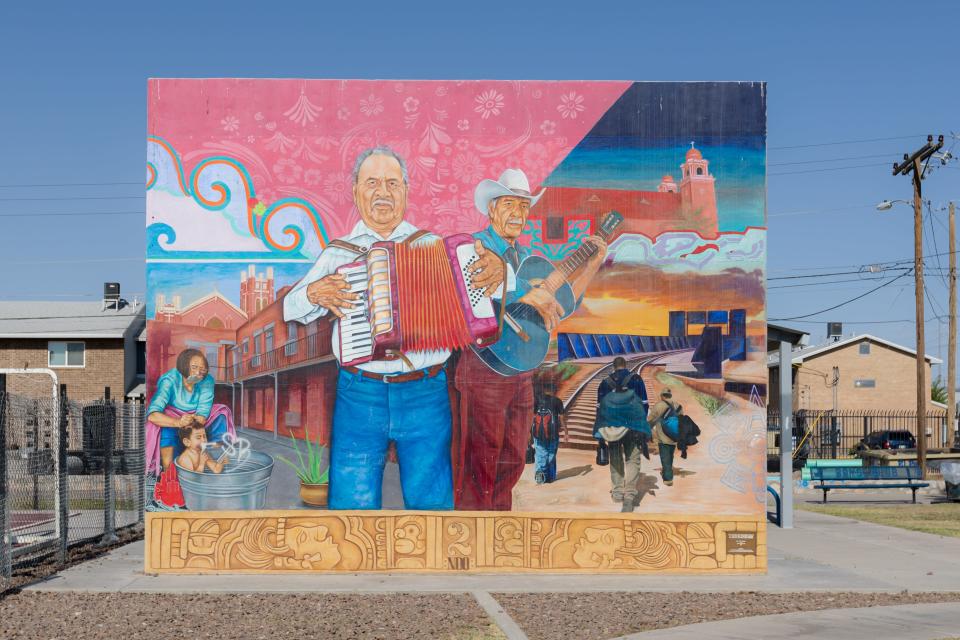
"El Corrido del Segundo Barrio" is a colorful mural, at 801 S. Florence St. on a handball court at the Boys Club Park.
It depicts the immigrant story, denoted by people walking along the railroad track and toward the Black Bridge, as well as the importance of music in people's lives. The accordion which has roots in Germany, shows the mixing of cultures that is inherit in the neighborhood. Prominent Catholic churches are in the background.
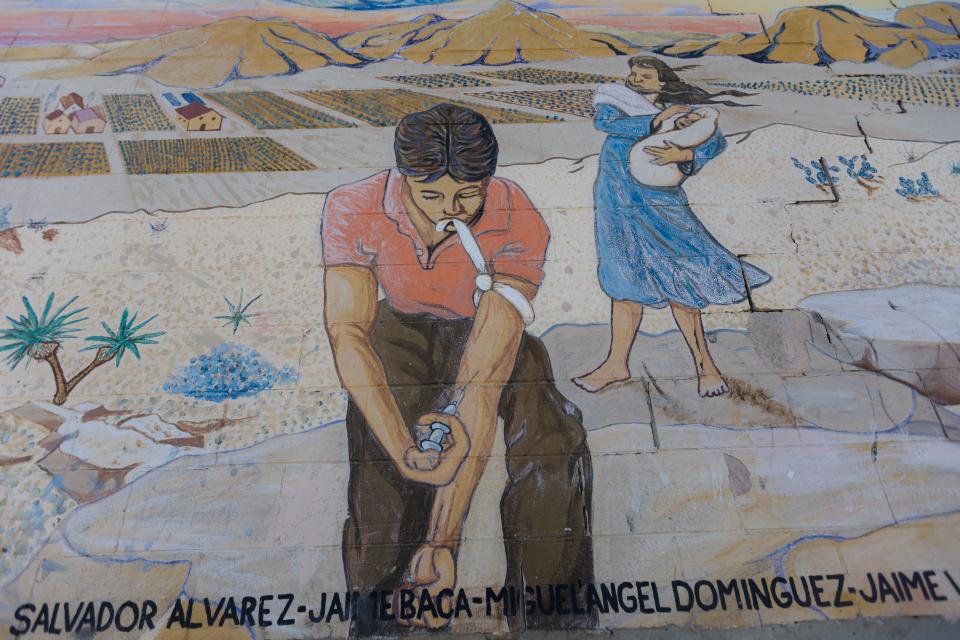
The woman washing a child in a tina (steel tub) denotes that many of the tenements during the 1960s did not have proper indoor plumbing and electricity.
The mural was was painted by Jesus "Cimi" Alvarado and Victor "Mask" Casas in 2012.
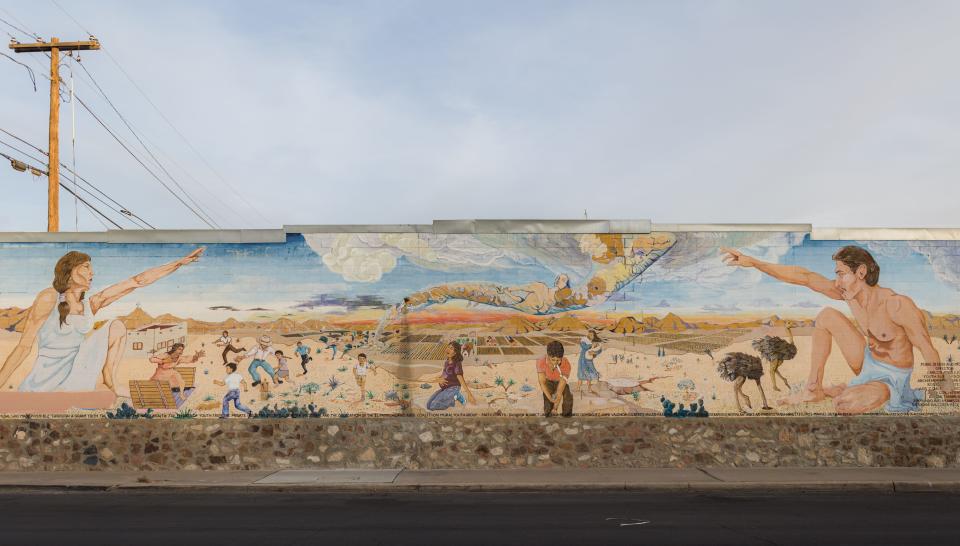
The AIDs mural, was painted at 801 E. 7th Avenue, and depicts a big health concern for the community during the 1980s.
The mural was painted in 1988 by El Paso artist Carlos Callejo with students from the Upper Rio Grande Private Industry Council's Summer Youth Employment Program and the Chicano Aids.
The mural takes up several feet, and depicts a man shooting up with a syringe, a pregnant woman, a young mother, agricultural fields and the shape of a woman lying across the sky, showing the effect of AIDs on a slimming body. The ostriches represent politicians who were sticking their heads in the sand and not addressing the issues.
Margo said Centro De Salud Familiar La Fe has been instrumental in addressing the health needs of this community. The clinics are led by Chief Executive Officer Salvador Balcorta, who is from South El Paso and has worked all his life toward bettering the health of the community.
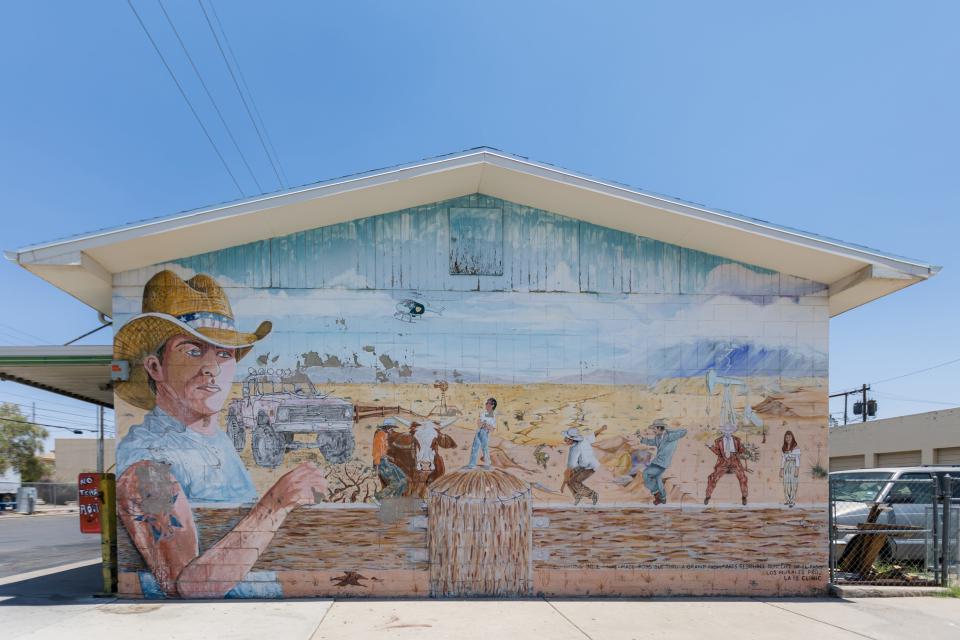
"El Chuco y Que" was painted by Carlos Callejo, assisted by Alejandro Martel, Raymundo “Rocky” Avila, Antonio Mercado, Manuel Arrellano and Frank Mata in 1991. The mural is at 900 E. Father Rahm Ave. at South Virginia Street in Segundo Barrio in El Paso.
It is a way for the community to show the diversity of people in Texas. Not all Texans are traditional cowboys. Some are proud pachucos, a generation of men known for wearing zoot suits and speaking their own dialect, known as caló.
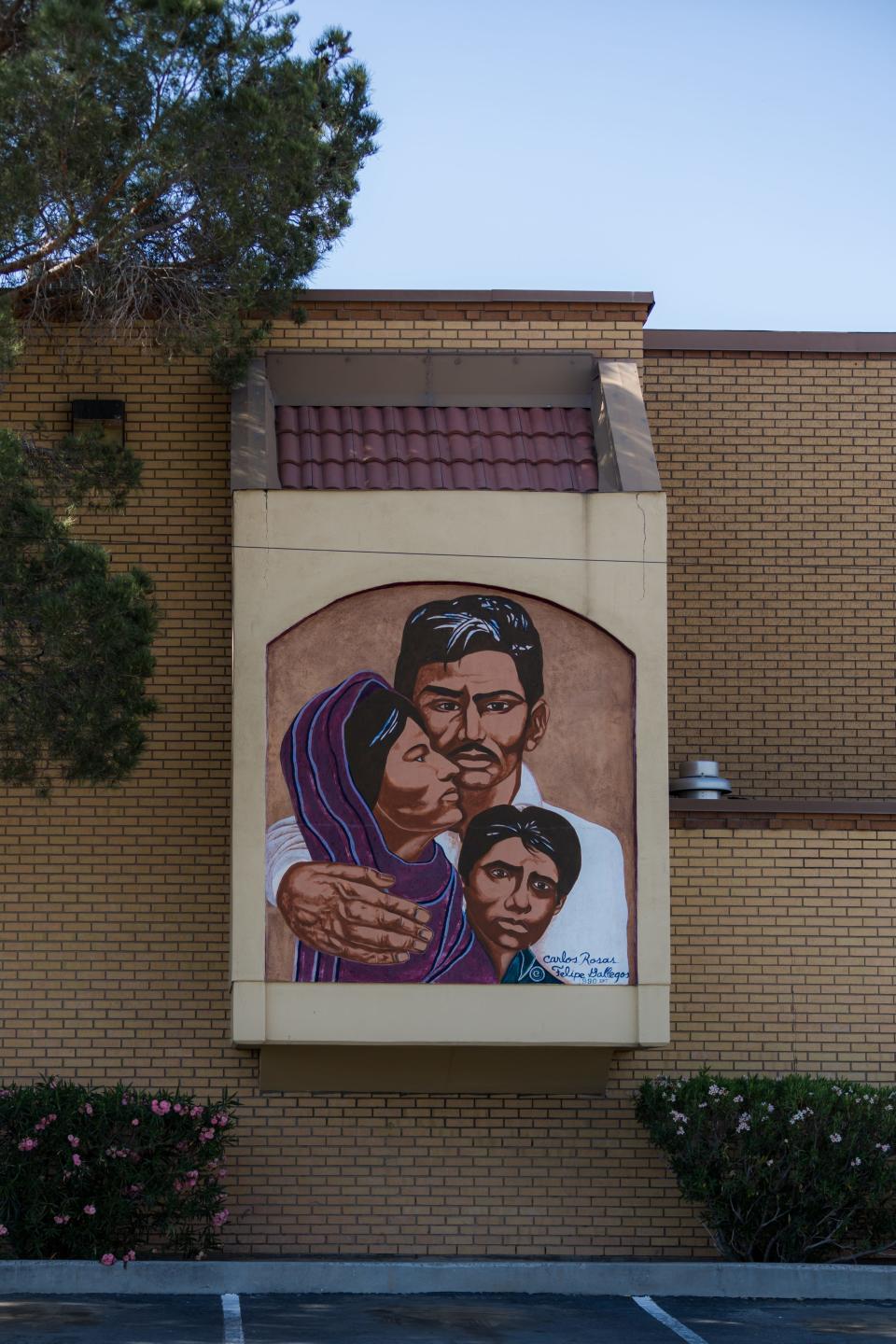
"Sacred Family, Tribute to the Chicano Family," was painted by Carlos Rosas, assisted by Felipe Gallegos in 1990. The mural is at 700 S. Ochoa St. at the exterior north wall or La Fe Clinic.
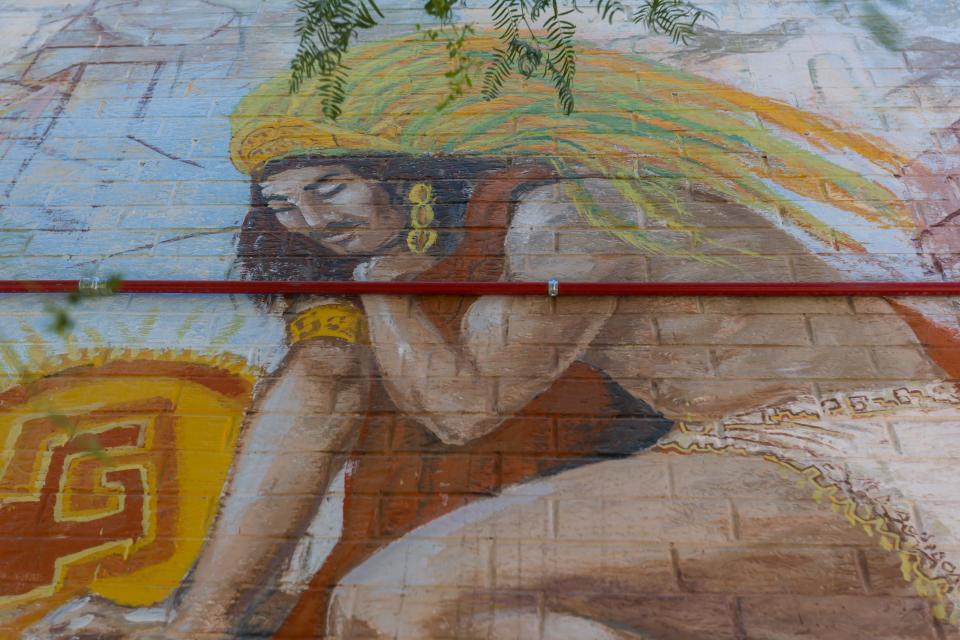
"Iztaccihuatl and Popocatepetl" was painted by Felipe Adame and Varrio Quinta Street (VQS) members in 1991. The mural is at 615 S. Campbell St. on the exterior east wall of the El Paso Housing Authority Apartment Complex in Segundo Barrio in El Paso.
According to Aztec mythology, Iztaccíhuatl was a princess who fell in love with one of her father's warriors, Popocatépetl. He went to war and Iztaccíhuatl was falsely told he died in battle. Popocatépetl returned to find his love had died of grief. He took her body to a spot outside Tenochtitlan and kneeled by her grave. The gods covered them with snow and changed them into mountains. Popocatépetl would then became an active volcano, raining fire on Earth in blind rage at the loss of his love.
At Sacred Heart Catholic Church, 602 S. Oregon Street, visitors will find a large mural by Francisco Delgado on the façade of the gymnasium. The mural honors key individuals connected to the community including Jesuit priest Carlos Pinto, founder of Sacred Heart Church and school and Jesuit pries Harold Rahm, who was known for riding around the neighborhood on his bicycle. Rahm served in El Paso for 12 years until he left to begin serving in Brazil in 1964. He died at 100 years old in 2019.
More: Sacred Heart Church in El Paso's Segundo Barrio gets $250,000 grant for restoration
María Cortés González may be reached at 915-546-6150; mcortes@elpasotimes.com; @EPTMaria on Twitter.
This article originally appeared on El Paso Times: Murals provide pictorial tour of El Paso's Segundo Barrio

